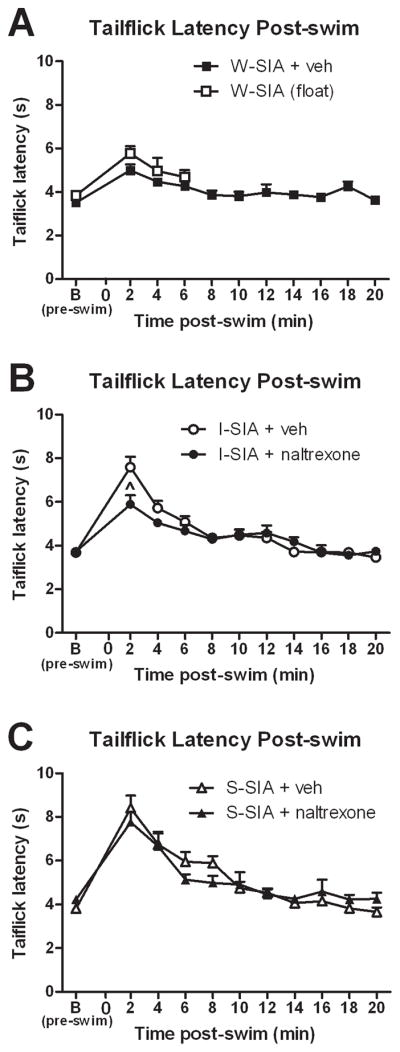Figure 1.

Opioid-dependent and –independent forms of stress-induced antinociception. (A) Rats displayed elevated tailflick latencies indicating a weak SIA (W-SIA), regardless of whether they actively swam (W-SIA + veh, N=8) or floated without swimming (W-SIA, float, N=9). (B) Systemic (ip) administration of the opioid antagonist naltrexone (14 mg/kg, N=7) partially prevented the elevation in tailflick latencies induced by I-SIA; (vehicle, N=8). (C) ip naltrexone (N=7) did not affect elevation in tailflick latency induced by S-SIA (vehicle, N=8). Mean ± SEM; repeated measures ANOVA, 1-way ANOVA, Tukey post-hocs; paired two-tailed t-tests. ^P≤0.05.
